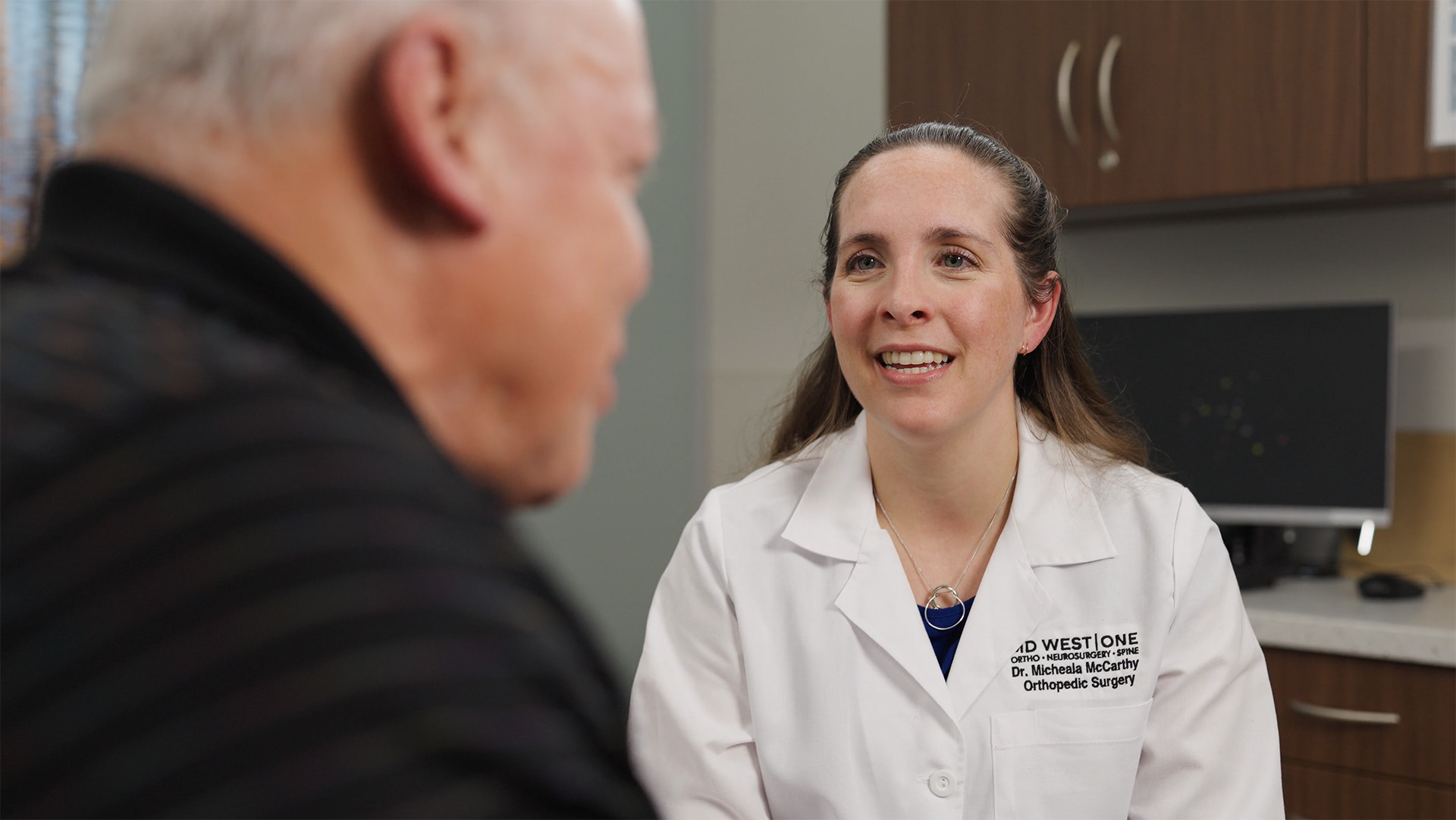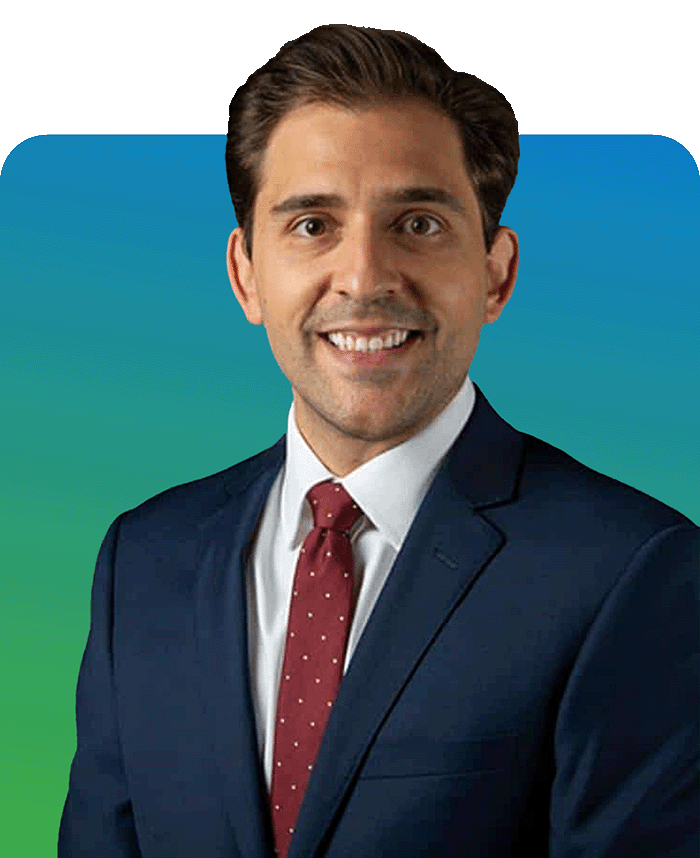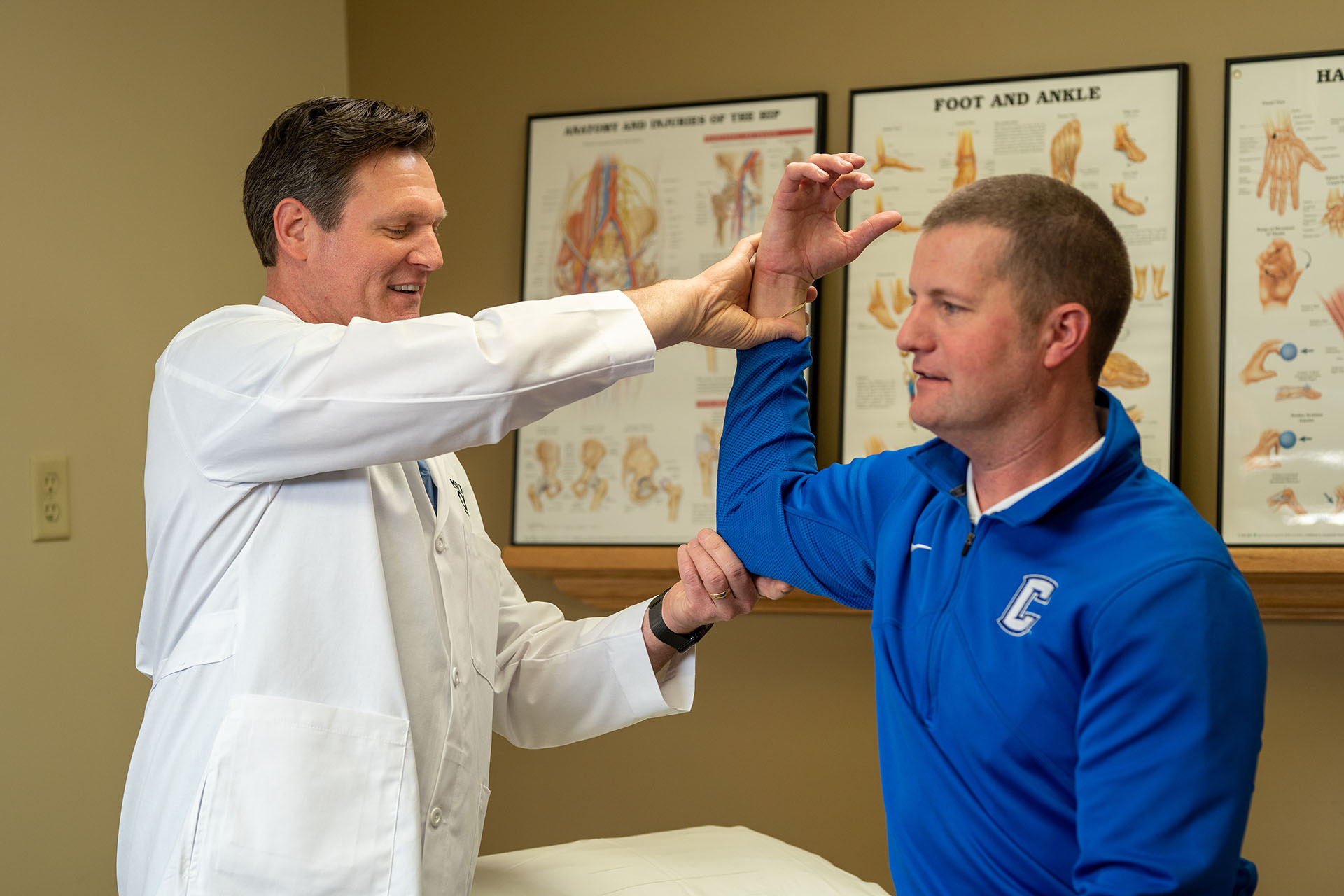Are you suffering from symptoms of Elbow Tendon Inflammation?
The Omaha Shoulder & Elbow Specialists at MD West ONE can properly diagnose and treat Elbow Tendon Inflammation through non-surgical and surgical treatments. If you have the following symptoms, you may want to make an appointment with one of our Board Certified Specialists.
The main symptom of elbow tendonitis is pain (sometimes a burning pain) and tenderness on the outside of the elbow. Stiffness and pain in the elbow in the morning or at night are also common and are worse when trying to use the hand or arm.
Because the muscles, tendons, and nerves travel through the arm, the pain, while usually worse over the elbow, can travel to the upper arm, lower arm, and to the wrist and hand. Some people who do not know recognize elbow tendonitis, find they have problems shaking hands, turning doorknobs, and holding objects. They may think the problem is in the hand or wrist when it is elbow tendonitis. However, one can also experience elbow pain when lifting and tendonitis is the most common cause of such discomfort.

Meet MD West ONE's orthopedic specialists and learn more about how they treat Elbow Tendon Inflammation

Sports Medicine & Total Joint

H. Wesley Cheng, M.D.
Sports Medicine & Total Joint

Michael Del Core, MD
Upper Extremity Specialist

George Emodi, M.D.
Sports Medicine & Total Joint

Brett W. Fischer, MD
Sports Medicine & Total Joint

Mark Franco, M.D.
Sports Medicine & Total Joint

Daniel L. Gaffney, MD
Hand & Wrist Specialist

Kayvon Izadi, MD
Hand & Wrist Specialist

Darren Keiser, M.D.
Sports Medicine & Total Joint

Justin Makovicka, M.D.
Knee, Shoulder & Sports Medicine

John "Jack" A. McCarthy, MD
Hand & Wrist Specialist

Micheala McCarthy, MD
Hand & Wrist Specialist

Mark Pitner, MD
Sports Medicine & Total Joint

Charles E. Rosipal, MD
Shoulder & Elbow Specialist

Jeffrey J. Tiedeman, MD
Hand & Wrist Specialist

Kimberly A. Turman, MD
Sports Medicine
Elbow Tendon Inflammation: Non-surgical and Surgical Treatment(s)

What is Elbow Tendon Inflammation?
Elbow tendonitis, also called lateral epicondylitis, is an inflammation of the connective tissue that fastens the muscles in the forearm to the elbow. The tendons attach to the outside edge of the upper arm bone (i.e., the humerus), where it meets the elbow. This type of elbow pain is also called tennis elbow. Learning how to treat elbow tendonitis is a good thing to know before the tendonitis pain occurs.
Tendonitis is caused by overuse of the forearm muscles, but playing a lot of tennis with its repetitive forearm motion is only one way of irritating these tendons. Plumbers, carpenters, and painters commonly develop tennis elbow as they engage in repetitive motions, too. Knowing how to treat elbow tendonitis is useful for different kinds of people who develop this elbow pain.
Other athletes also develop elbow tendonitis — such as golfers and baseball players. The typical age for developing tendonitis is 30 to 50 years, but this varies widely. Every year, 1% to 3% of the population gets elbow tendonitis. Knowing how to treat elbow tendonitis is important for everyone as anyone can develop this painful condition.
Are there any non-surgical treatments?
If people learn how to treat lateral epicondylitis, they can often successfully treat their symptoms at home. The initial steps should be done when pain and tenderness develop over the outer elbow area:
1. Rest the arm to decrease further injury.
2. Apply ice wrapped in a towel or very cold water in a paper cup to the injured area for 20 minutes. Do this 3 or 4 times a day for the first few days to minimize inflammation and further injury.
3. Elbow pain and inflammation can often be treated with medications such as ibuprofen, acetaminophen, or naproxen.
Doing these things when an injury that seems like elbow tendonitis becomes apparent can improve the speed and likelihood of a full recovery. Treating elbow tendonitis at home can save time recovering.
Other options for those wanting to know how to treat elbow tendonitis at home include a tennis elbow brace. Applying a tight compression brace over the muscles and tendons just below the elbow helps to keep these structures from irritating the tendonitis by pushing the forces when using the arm down the arm and away from the center of irritation. A brace also helps to let the muscles and tendons rest.
There are a variety of braces and compression bands for people seeking treatment for elbow tendonitis. Finding the correct style and fit is somewhat a matter of personal choice, but an orthopedic specialist can also be of tremendous assistance in choosing the best device.
Naturally, knowing if an elbow or arm injury is, in fact, tendonitis is important for treating elbow pain.
When in doubt, an orthopedic doctor can do a physical examination, take a good history of a patient’s activities, and order x-rays.
If a question remains about the diagnosis, a CT scan, MRI, or nerve conduction study can be performed.
What if the non-surgical options do not work for me?
While it is very valuable to know how to treat elbow tendonitis as most cases can successfully be treated at home, improper treatment or no treatment usually results in tendonitis lasting six months to 2 years before resolving. During this time, pain and disability occur daily. If a patient employs the various treatment strategies for 6 to 12 months without significant improvement, surgery may be recommended.
While rarely necessary, when surgery is needed, it is usually done arthroscopically or with an open incision made over the outer elbow. The abnormal and inflamed tissue is removed, and after a brief recovery period, most surgical patients do extremely well. Patients still need to understand how to treat elbow tendonitis because part of the healing process will involve the same exercises as patients who have not had surgery. Ultimately, only about 10% or fewer patients will require some sort of surgical treatment.
It is necessary to see an orthopedic specialist if you know how to treat elbow tendonitis and have been treating it with no improvement after a few weeks or months. While it is often gradual, some improvement should be obvious within the first few weeks. Also, when you have questions about diagnosis, treatment options, or exercises for your elbow, finding the best orthopedic specialists is easy.
